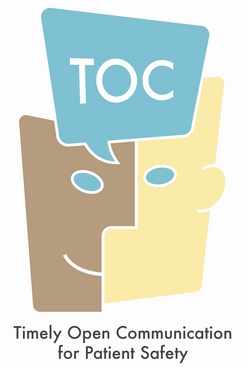



Communication 101

We can learn communication skills and become more skilled communicators.
Listen
Introduce yourself by name and job description/title
Learn and use the names of patients, family members and other team members
Ask for clarification
Ensure you have understood what a person has said by repeating it back or paraphrasing, ask others to do the same for you
Seek out privacy
Limit distractions and interruptions (pagers, phone calls, alarms, overhead announcements...)
Focus on the other person, undivided attention even if for a short time is better than a longer period of fractured or divided attention
Speak slowly and use plain language - If technical terms are necessary then explain them first
Explain all aspects of care and any changes, consultations or tests
Ensure that patient and family know who the members of the care team are and who is the most responsible physician
Build relationships
Ensure information flow
Communicate treatment, management plans and concerns
Make sure everyone knows what is happening now, in the future, what the next steps might be, what to do if there are side effects or complications
Read the chart - including notes from all disciplines
Write things down
Provide a way for people to follow up with questions or for more information once they have had time to think about what you have just said
Make sure everyone has the information they need (if you want the family doctor to follow up on things, then you need to talk with the family doctor, if the key support in the family lives in another province then you may need to get permission to talk to that person on the phone)
Debrief conflict, bad outcomes, and good events too, learn from experience, generalize and try to repeat
Close the loop - keep everyone in the loop, bring information back to family and those who provided earlier care
Assume nothing
READ THE CHART
Provider-Patient communication

Imagine how you would like a nurse to treat a close relative, and then model your behaviours accordingly.
Introduce yourself by name and title.
Use client’s preferred name.
Make eye contact, when culturally appropriate, and be aware of your body language.
Ask your client open-ended questions to encourage more than a "yes" or "no" response.
Listen actively to and show an interest in your clients.
Inquire into unusual comments or behaviour.
Identify your client’s care needs and goals.
Provide sufficient information for clients to make choices and have realistic expectations.
Collaborate with your client to find the best possible solutions.
Follow through on your client commitments and notify clients of any changes in routine.
Reflect on how your clients perceive you.[1]
_________________________________
1. Adpated from "Communication Strategies that Strengthen Nurse-Client Relationships" Mastering Communication. Angela McNabb RN. College of Nurses of Ontario 2006 www.cno.org/pubs/mag/2005/09Sept/feat_comm.htm accessed August 14, 2009
 Previous
Previous